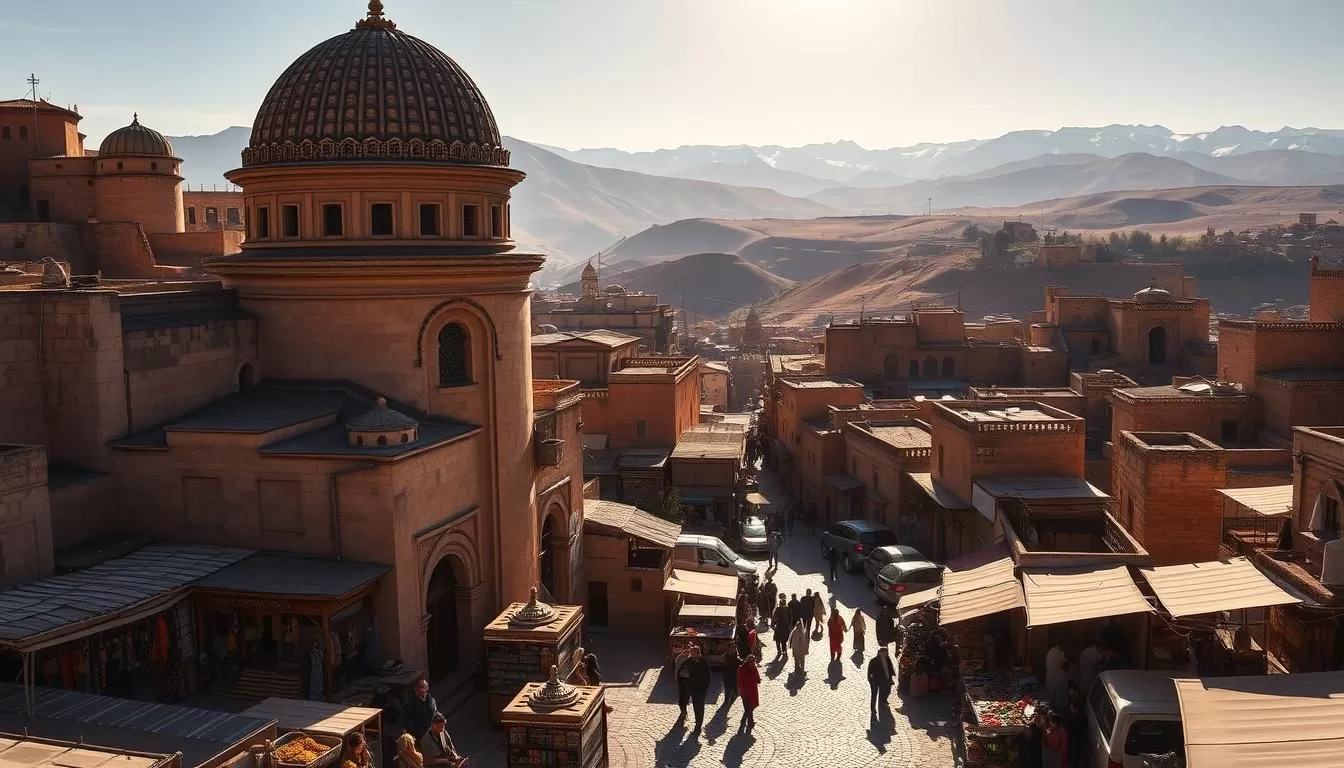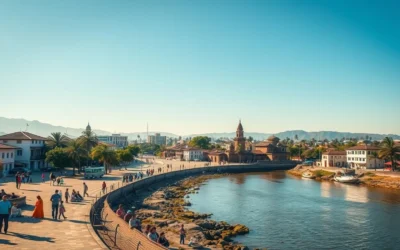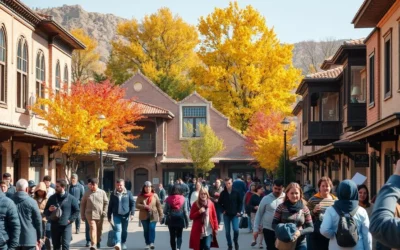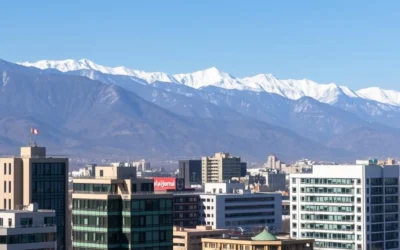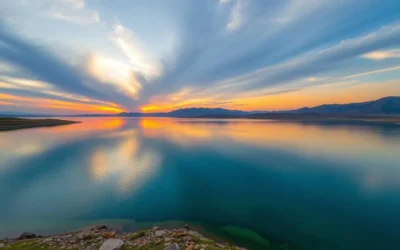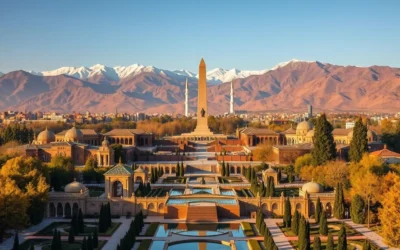✓ Accommodations✓ Flights✓ Rental Cars
Nestled at the foot of the Zagros Mountains, this ancient city boasts a history that spans over 3,000 years. Known for its deep cultural roots and vibrant heritage, it offers a unique blend of ancient wonders and modern hospitality. Whether you’re a history enthusiast or a nature lover, this destination promises an unforgettable travel experience.
From the awe-inspiring Ali Sadr Cave, the world’s largest water cave, to the ancient inscriptions at Ganj Nameh, there’s no shortage of marvels to explore. The city is also home to significant archaeological sites like Hegmataneh, where relics from the Achaemenian period have been uncovered. These attractions make it a top choice for tourists seeking to immerse themselves in history and culture.
With its stunning landscapes and rich heritage, this city invites you to discover its treasures. Whether you’re wandering through bustling bazaars or marveling at ancient architecture, every moment here is a step back in time. Let this guide help you make the most of your visit to this remarkable destination.
Introduction to Hamadan and its Timeless Charm
Steeped in over 3,000 years of history, this city stands as a testament to time. Known as Ecbatana in ancient days, it was the capital of the Medes and a pivotal hub on the Silk Road. Its strategic location in the Zagros Mountains has shaped its rich cultural and historical legacy.
Throughout the centuries, this city has witnessed the rise and fall of empires. From the Medes to the Achaemenids and Seleucids, each era left its mark. Today, its ancient ruins and modern attractions coexist, offering a unique blend of the past and present.
The city’s elevation of 1,850 meters (6,070 feet) adds to its allure, providing breathtaking views and a mild climate. Its continental weather, with four distinct seasons, ensures there’s always something new to experience. Whether you’re exploring archaeological sites or enjoying local traditions, every moment here feels like a step back in time.
What makes this city truly special is its ability to preserve its culture while embracing modernity. From ancient inscriptions to vibrant bazaars, it offers a glimpse into a world that has thrived for millennia. Its story is one of resilience, innovation, and timeless charm.
Hamadan’s Historical Landmarks
Step into a world where history whispers through ancient stones and inscriptions. This city is a treasure trove of landmarks that tell the story of empires, scholars, and civilizations that once thrived here. From royal tales etched in stone to ruins of a once-majestic city, every corner holds a piece of the past.
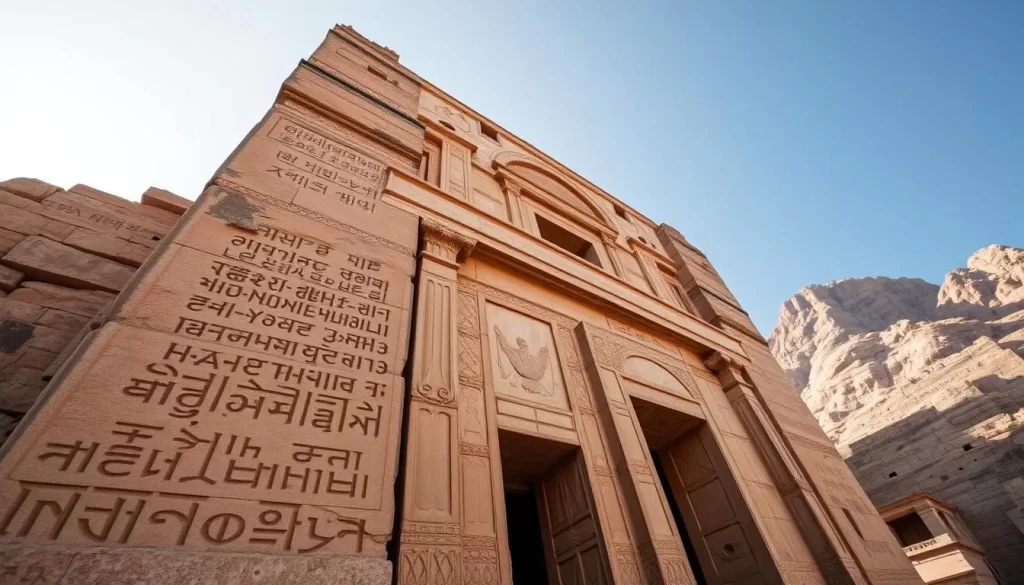
Ganjnameh Inscriptions & Royal Tales
Carved into the Alvand Mountain, the Ganjnameh inscriptions are a testament to the grandeur of the Achaemenid Empire. These ancient texts, commissioned by kings Darius I and Xerxes I, are written in three languages: Old Persian, Elamite, and Babylonian. They offer a glimpse into the royal decrees and achievements of a bygone era.
Visiting these inscriptions feels like stepping back in time. The intricate cuneiform writings are a marvel of ancient craftsmanship, showcasing the sophistication of Persian culture. It’s a must-see for anyone fascinated by history and language.
Hegmataneh Ancient City Ruins
The ruins of Hegmataneh, once the capital of the Medes, are a window into an ancient city that thrived over 3,000 years ago. Covering an area of 1.4 kilometers, this archaeological site reveals layers of history from the Medes to the Achaemenids.
Walking through Hegmataneh, you’ll encounter remnants of palaces, temples, and fortifications. Each stone tells a story of a civilization that played a pivotal role in shaping the region’s history. It’s a journey through time that leaves you in awe of human ingenuity.
Avicenna Mausoleum: A Beacon of Knowledge
The Avicenna Mausoleum stands as a tribute to one of history’s greatest scholars. Built in 1952, this site honors Avicenna, a philosopher and physician whose works influenced the world. The mausoleum includes a museum and library, offering insights into his contributions to science and philosophy.
Visiting this landmark is not just about history; it’s about inspiration. Avicenna’s legacy reminds us of the power of knowledge and the enduring impact of intellectual pursuit. It’s a place where the past meets the present, encouraging visitors to explore and learn.
| Landmark | Key Features | Historical Significance |
|---|---|---|
| Ganjnameh Inscriptions | Carved by Darius I and Xerxes I, three languages | Royal decrees of the Achaemenid Empire |
| Hegmataneh Ruins | 1.4 km archaeological site, palaces, temples | Capital of the Medes, Achaemenid influence |
| Avicenna Mausoleum | Museum, library, 1952 construction | Honors Avicenna’s contributions to science |
Discovering Natural Wonders and Outdoor Adventures
For those seeking adventure, this destination offers breathtaking natural wonders and outdoor thrills. From underground marvels to scenic mountain trails, every experience here is a blend of beauty and excitement.
Ali Sadr Cave: An Underground Journey
Step into the mesmerizing world of Ali Sadr Cave, one of the most spectacular underground water caves globally. Known for its crystal-clear waters and stunning rock formations, this natural wonder invites you to explore its depths by boat.
As you glide through the cave’s serene waters, you’ll marvel at the intricate stalactites and stalagmites that have formed over millennia. The experience is both peaceful and awe-inspiring, making it a must-visit for nature enthusiasts.
Zagros Mountain Trails and Scenic Views
For those who love hiking, the Zagros Mountain trails offer unparalleled beauty and adventure. These trails wind through lush landscapes, offering panoramic views of the surrounding valleys and peaks.
Whether you’re a seasoned hiker or a casual explorer, the trails cater to all skill levels. The crisp mountain air and the sound of nature create a refreshing escape from the everyday hustle.
Outdoor activities here are more than just exercise; they’re a way to connect with nature and experience its raw beauty. From sunrise hikes to sunset views, every moment is unforgettable.
Taste of Tradition: Savor Hamadan’s Local Cuisine
Immerse yourself in the rich flavors of a city where every meal tells a story. The culinary scene here is a vibrant mix of ancient traditions and modern influences. From bustling bazaars to cozy hotels, every place offers a unique taste of local life.
Local Delicacies and Must-Try Dishes
One of the standout dishes is Angosht Pich, a savory pastry filled with spiced meat and herbs. This dish is a perfect example of how spices elevate flavors in traditional recipes. Another must-try is Dizi, a hearty stew served with flatbread and pickled vegetables.
Rice dishes like Baghali Polo and Tah Dig are staples, showcasing the importance of grains in local cuisine. These dishes are often enjoyed in family gatherings, reflecting the warmth of Iranian hospitality.
Dining Experiences and Cultural Flavors
Dining here is more than just a meal; it’s a cultural experience. Traditional bazaars are a great place to sample street food and interact with locals. For a more refined experience, many hotels and restaurants offer a modern twist on classic dishes.
As you explore, you’ll notice how food brings people together. Whether it’s sharing a kebab platter or sipping on Doogh, every bite connects you to the city’s rich heritage.
“Food is the ingredient that binds us to culture and tradition.”
| Dish | Key Ingredients | Where to Try |
|---|---|---|
| Angosht Pich | Spiced meat, herbs, pastry | Local bazaars |
| Dizi | Lamb, beans, tomatoes, flatbread | Traditional eateries |
| Baghali Polo | Rice, dill, fava beans | Hotels and restaurants |
Explore Arts, Crafts, and Local Markets
Step into the vibrant world of local markets, where tradition and craftsmanship come alive. These bustling hubs are the beating heart of the region’s arts and crafts, offering a glimpse into its rich heritage. From intricate pottery to vibrant textiles, every item tells a story of skill and dedication.
Traditional Bazaars and Pottery in Lalejin
Lalejin, located just 20 kilometers away, is renowned as the pottery capital of the region. This small town, with a population of around 55,000, has been a center of pottery production for centuries. The artisans here use traditional techniques passed down through generations, creating pieces that reflect the essence of Iranian culture.
Visiting Lalejin’s workshops, you’ll witness the entire pottery process. From shaping the clay to firing it in kilns, every step is a testament to the artisans’ expertise. The finished products, ranging from decorative items to functional tableware, are both beautiful and durable.
The local bazaars in the area are equally fascinating. These markets have been centers of trade since the days of the capital Medes, offering a variety of goods that showcase the region’s craftsmanship. From handwoven carpets to intricately designed ceramics, the bazaars are a treasure trove for shoppers.
Exploring these markets is more than just shopping; it’s an immersive cultural experience. The vibrant atmosphere, the scent of spices, and the sound of haggling create a sensory journey. Whether you’re looking for souvenirs or simply soaking in the ambiance, these bazaars are a must-visit.
| Market | Specialty | Cultural Significance |
|---|---|---|
| Lalejin Pottery Market | Handcrafted pottery | Center of traditional craftsmanship |
| Local Bazaars | Textiles, ceramics, spices | Historical trade hubs |
Hamadan, Iran: Best Things to Do – Top Picks
Discover a city where ancient wonders meet modern vibrancy, offering a unique blend of history and contemporary life. From the awe-inspiring Ali Sadr Cave, the world’s largest water cave, to the bustling bazaars, every corner tells a story of a civilization that has thrived for millennia.
This destination is not just about its historical landmarks. It also invites you to experience its lively life through vibrant markets and local traditions. The Bazaar of Hamadan, with its 36 bazaars and 26 caravanserais, has been a hub of trade and culture since ancient times.
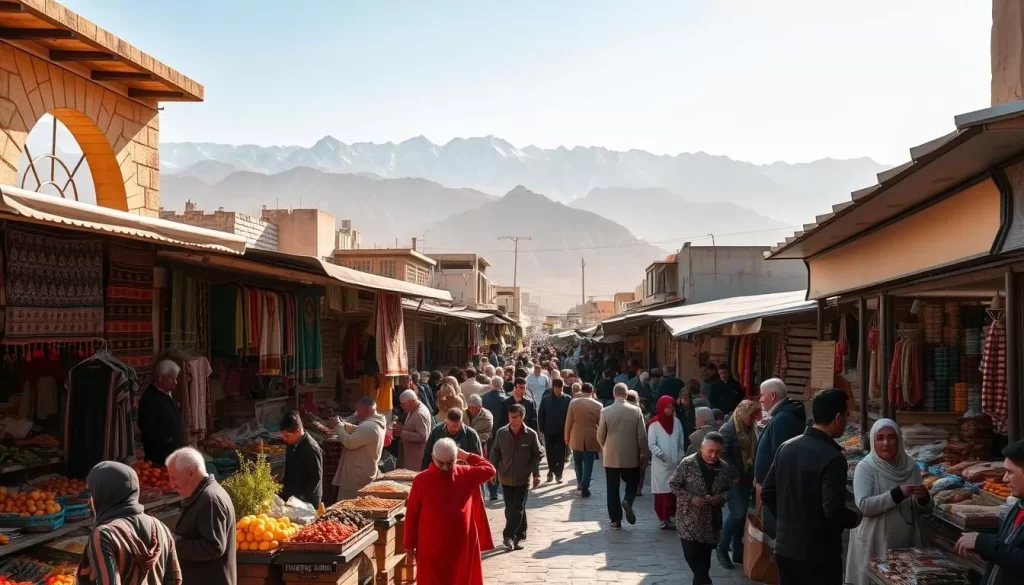
Step into the past at the Ganj Nameh inscriptions, where royal tales from the Achaemenid era are etched in stone. These ancient texts, dating back to 521-485 BC, are a testament to the city’s rich heritage. The Hegmataneh ruins also offer a glimpse into the Medes and Achaemenid periods, showcasing the layers of history that define this place.
But the city’s charm doesn’t end with its ancient sites. It also thrives in its modern life, offering a range of experiences from scenic mountain trails to local culinary delights. Whether you’re exploring the Zagros Mountains or savoring traditional dishes, every moment here is a celebration of its diverse eras.
This destination is a living museum, where every street and stone tells a story. It’s a place where the past and present coexist, inviting you to explore its full diversity. From ancient ruins to bustling markets, the city offers a journey through time that’s both enriching and unforgettable.
Seasonal Charm: Best Time to Visit Hamadan
Experience the changing seasons in a city where every time of year brings its own unique charm. With a continental climate, this destination offers four distinct seasons, each with its own appeal. Whether you’re drawn to the warmth of summer, the blooms of spring, or the crisp air of winter, there’s always a reason to visit.
Weather, Festivals, and Climate Insights
Summer is a popular time to explore, with temperatures ranging from 23 to 35 degrees Celsius. The warm weather is perfect for outdoor adventures like hiking in the Zagros Mountains or exploring the Ali Sadr Cave. Clear skies and longer days make it ideal for sightseeing.
Spring brings a burst of color as flowers bloom across the region. The mild temperatures and fresh air create a refreshing atmosphere for exploring historical sites and local markets. It’s also a great time to enjoy cultural festivals that celebrate the season’s renewal.
Winter transforms the landscape into a snowy wonderland. The Ganjnameh Waterfall freezes, attracting ice-climbers and adventurers. The cooler temperatures make it a cozy time to visit museums and enjoy traditional dishes in local eateries.
The best time to visit is from early September to mid-October. During this period, the weather is cool, and the skies are clear, offering optimal conditions for exploring. Whether you’re visiting historical landmarks or enjoying the natural beauty, this season ensures a memorable experience.
Each season offers its own magic, from summer’s warmth to winter’s charm. Plan your trip to coincide with local festivals and events to fully immerse yourself in the culture. For more tips on the best times to explore nearby destinations, check out this guide on the best time to visit Isfahan.
Traveling between cities is easy and affordable, especially by bus. Learn more about booking bus tickets in Iran to make your journey seamless. No matter when you visit, this city promises a unique and unforgettable experience.
Experiencing the Local Culture & Vibrancy
Dive into a world where history and modernity blend seamlessly, offering a vibrant cultural experience. This region is a living testament to the richness of its heritage, where every corner tells a story of tradition and community.
From bustling markets to serene cultural sites, the area invites you to explore its unique charm. The locals take pride in their traditions, which are celebrated through festivals, art, and daily life. It’s a place where the past is honored, and the present thrives.
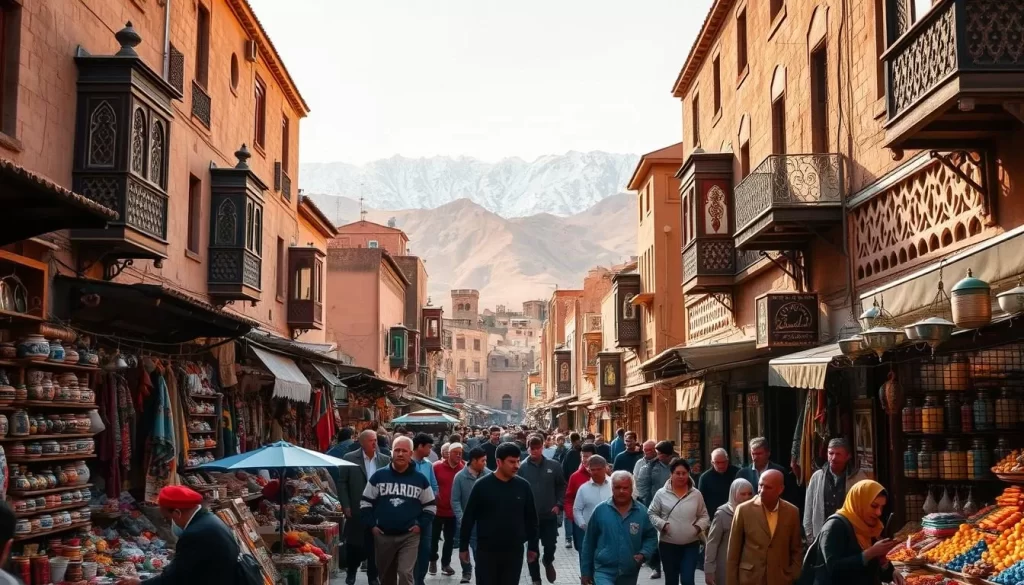
Community Traditions and Cultural Heritage
The heart of this region lies in its people. Their deep-rooted traditions are visible in every aspect of life. Whether it’s the intricate pottery of Lalejin or the vibrant textiles of local bazaars, craftsmanship is a way of life here.
Festivals are a highlight, bringing communities together to celebrate their shared heritage. These events are a feast for the senses, with music, dance, and traditional cuisine taking center stage. It’s an opportunity to witness the region’s cultural vibrancy firsthand.
Artistic displays are everywhere, from murals on city walls to handmade crafts in markets. These creations reflect the creativity and skill of the local artisans. Each piece tells a story, connecting you to the region’s rich history.
Unique Cultural Sites and Community Centers
This area is home to several cultural sites that are worth exploring. From ancient ruins to modern museums, each offers a glimpse into the region’s diverse heritage. These attractions are not just places to visit but experiences to cherish.
Community centers play a vital role in preserving and promoting local traditions. They host workshops, exhibitions, and events that showcase the region’s artistic and cultural legacy. Visiting these centers is a great way to connect with the local way of life.
“Culture is the art of living, passed down through generations.”
| Cultural Site | Key Features | Experience |
|---|---|---|
| Lalejin Pottery Workshops | Handcrafted pottery, traditional techniques | Witness the artistry of local craftsmen |
| Local Bazaars | Textiles, ceramics, spices | Immerse in the vibrant market culture |
| Community Centers | Workshops, exhibitions, events | Engage with local traditions and art |
For a deeper dive into cultural experiences, consider exploring Rasht, another vibrant city known for its rich heritage and culinary excellence. Whether you’re here for the festivals, the art, or the history, this region promises an unforgettable journey into its cultural soul.
Unique Activities for the Adventurous Traveler
For the adventurous traveler, there’s nothing quite like stepping off the well-trodden path to uncover hidden gems. This destination offers a treasure trove of unique activities that go beyond the usual tourist spots. Whether you’re hiking secret trails or exploring lesser-known local spots, every moment is a chance to embrace the unexpected.
Off the Beaten Path Experiences
One of the most thrilling ways to explore is by venturing into the Zagros Mountains. Here, you’ll find trails that wind through untouched landscapes, offering breathtaking views. A popular route is the 10-kilometer hike to a hidden waterfall, known only to locals. This activity is perfect for those who love a challenge and want to connect with nature.
Another unique experience is exploring the ancient rock formations near the Alvand Mountain. These formations, shaped by centuries of wind and rain, are a geological wonder. A 5-kilometer trek will take you to the heart of this natural marvel, where you can marvel at the intricate patterns and enjoy the solitude.
For a cultural twist, visit the small village of Lalejin, just 20 kilometers away. Known as the pottery capital, this village offers workshops where you can learn traditional crafting techniques. It’s a hands-on activity that lets you dive into the local culture and create your own souvenir.
If you’re planning a trip that goes beyond the ordinary, consider these unique experiences. They’re designed for the curious traveler who seeks adventure and discovery. For more inspiration, explore more about unique Iranian experiences.
| Activity | Distance (km) | Highlights |
|---|---|---|
| Zagros Mountain Hike | 10 | Hidden waterfall, scenic views |
| Alvand Rock Formations | 5 | Geological wonders, solitude |
| Lalejin Pottery Workshop | 20 | Traditional crafting, cultural immersion |
Practical Travel Tips and Accommodation Options
Planning your trip to this historic region requires thoughtful preparation to ensure a smooth and enjoyable experience. From choosing the right accommodation to navigating local transportation, every detail matters. Here’s a guide to help you make the most of your visit.
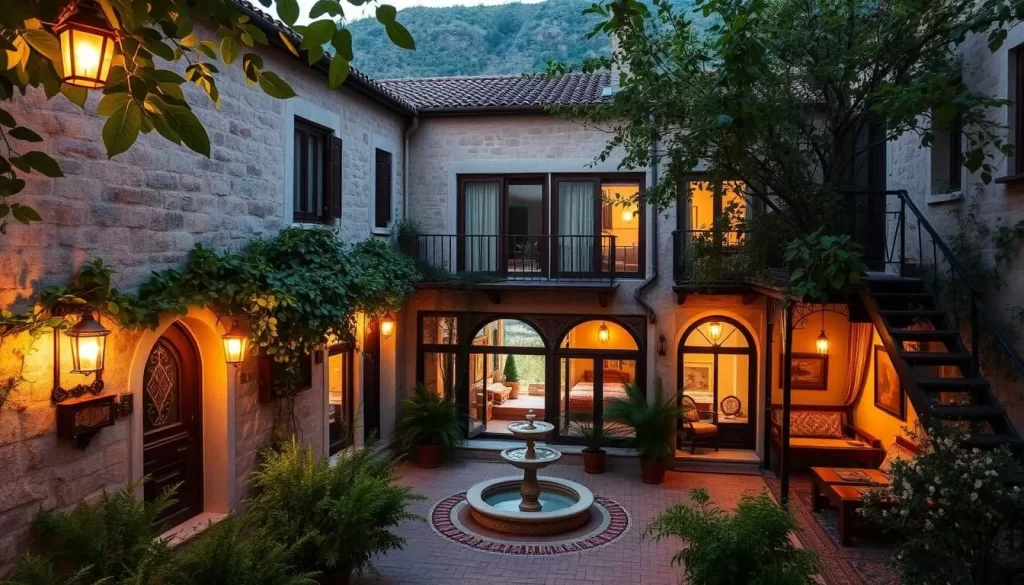
Where to Stay in Hamadan
Finding the right place to stay is an essential part of your journey. Whether you prefer boutique hotels, cozy hostels, or authentic homestays, there’s something for every budget. Boutique hotels offer a blend of modern amenities and local charm, while hostels provide a budget-friendly option for solo travelers.
For a genuine taste of local life, consider staying in a homestay. These accommodations allow you to connect with residents and experience their hospitality firsthand. Many homestays are located in the heart of the city, giving you easy access to key attractions.
Travel Essentials and Local Insights
Understanding the local payment system is crucial for a hassle-free trip. While cash is widely accepted, some establishments may not accept cards. It’s a good idea to carry local currency for smaller purchases and transportation.
Public transportation is a convenient way to explore the city. The metro and bus systems are well-connected, making it easy to reach popular sites. For a more personalized experience, consider using ride-hailing apps like Snapp, which offer transparent pricing and comfortable rides.
Visa requirements are another important consideration. Most travelers will need to obtain a visa before arrival, so be sure to check the latest regulations. For American citizens, traveling with a private guide or group tour is recommended to ensure a smooth experience.
For more tips on navigating Iran as an American traveler, check out this guide. It provides valuable insights into cultural norms, safety, and financial considerations.
Insights into Hamadan’s Historical Legacy
Uncover the layers of history in a city where every stone tells a story of empires and kings. This ancient city, with a history spanning over 3,000 years, has been shaped by the rise and fall of civilizations, each leaving its mark. From its strategic location in the Zagros Mountains to its role as a hub of trade and culture, the city’s legacy is deeply intertwined with its natural environment.
Timeline of Civilizations and Empires
The city’s history begins with the Medes, who established it as their capital in the 7th century BCE. Known as Ecbatana, it became a center of power and culture. The Achaemenid Empire later expanded its influence, with kings like Darius I and Xerxes I leaving their mark through inscriptions and monumental architecture.
During the Seleucid and Parthian periods, the city continued to thrive as a key trading post on the Silk Road. Its elevation of 1,850 meters (6,070 feet) provided a strategic advantage, while its access to water sources ensured its survival. The city’s climate, with its distinct seasons, played a crucial role in shaping its agricultural and economic activities.
The Islamic Golden Age brought further prosperity, with the construction of landmarks like the Alaviyan Dome in the 12th century. This era also saw the rise of cultural and intellectual figures, including the poet Baba Taher, whose legacy continues to inspire.
Natural Elements and Their Historical Impact
Water has always been a vital resource for the city. Its location near the Alvand Mountain provided access to natural springs, which were essential for agriculture and daily life. The Ganjnameh inscriptions, carved into the mountain, highlight the importance of this resource.
The city’s climate, with its hot summers and cold winters, influenced its development. The average summer temperatures range from 23 to 35 degrees Celsius, making it a favorable location for trade and settlement. The seasonal changes also shaped the city’s cultural practices, from festivals to agricultural cycles.
Kings and Their Legacy
The influence of kings is evident in the city’s landmarks. The Ganjnameh inscriptions, commissioned by Darius I and Xerxes I, are a testament to their power and vision. These inscriptions, written in three languages, reflect the cosmopolitan nature of the Achaemenid Empire.
Kings also played a role in the city’s architectural development. The Alaviyan Dome, built under the Seljuk dynasty, showcases the artistic and engineering achievements of the Islamic Golden Age. These structures continue to stand as symbols of the city’s rich heritage.
| Era | Key Figures | Contributions |
|---|---|---|
| Medes (7th century BCE) | King Cyaxares | Established Ecbatana as the capital |
| Achaemenid Empire (6th-4th century BCE) | Darius I, Xerxes I | Ganjnameh inscriptions, monumental architecture |
| Islamic Golden Age (12th century) | Seljuk Dynasty | Alaviyan Dome, cultural and intellectual growth |
For a deeper understanding of the city’s cultural patterns, explore this study on cultural traditions. It offers insights into the historical and artistic influences that have shaped the region.
Conclusion
This ancient city offers a world-class mix of history, culture, and scenic beauty. From the awe-inspiring Ali Sadr Cave to the royal tales etched in stone at Ganj Nameh, every corner tells a story of a civilization that has thrived for millennia.
The city’s vibrant markets and traditional crafts invite you to immerse yourself in its rich heritage. Whether you’re exploring archaeological sites or savoring local cuisine, every moment here is a celebration of its diverse eras.
Plan your visit to enjoy the unique weather and seasonal charm. From spring blooms to winter’s snowy wonderland, each season offers its own magic. For more insights, check out this guide on local experiences.
With its world-renowned attractions and welcoming atmosphere, this destination promises an unforgettable journey. Discover its treasures and create memories that will last a lifetime.
The above is subject to change.
Check back often to TRAVEL.COM for the latest travel tips and deals.
